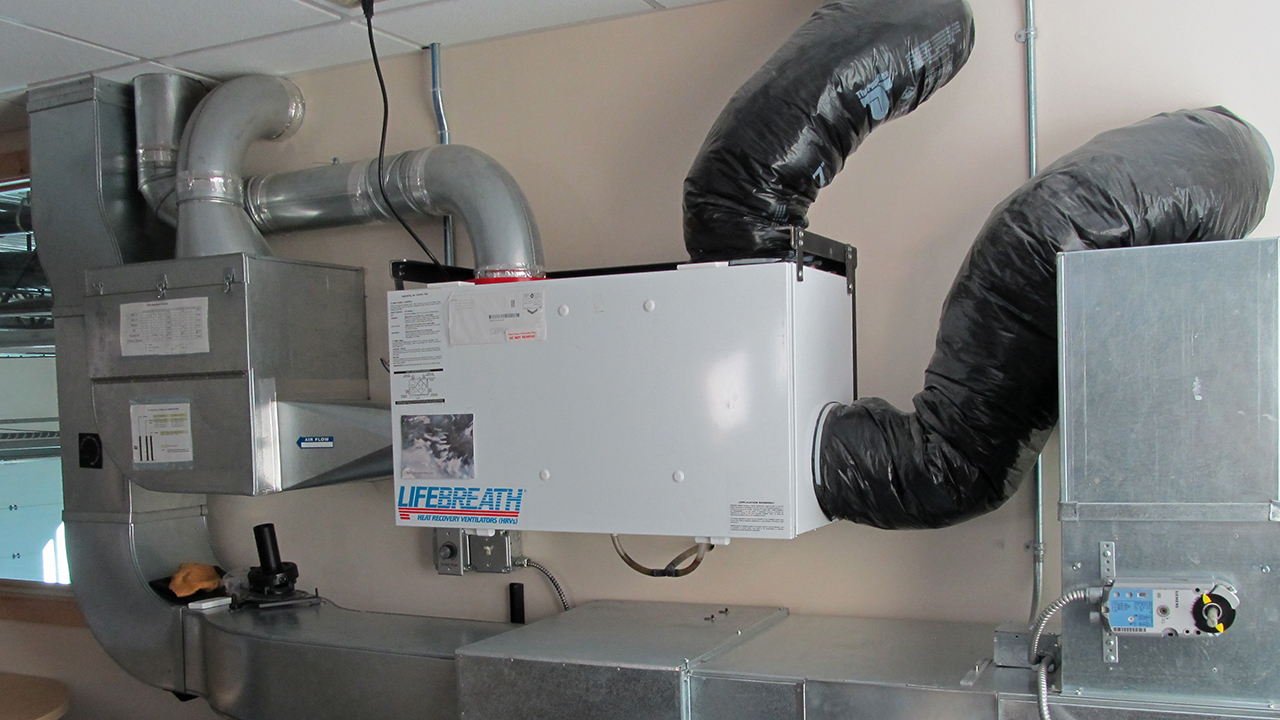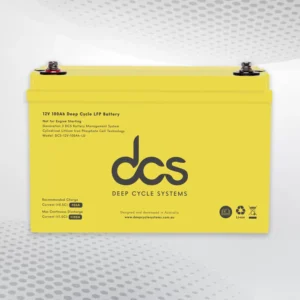Sustainable building design is more than just a trend; it’s necessary in our fight against climate change and resource depletion. As we look for innovative solutions to create functional and eco-friendly spaces, the role of Heat Recovery and Ventilation System emerges as crucial. These systems enhance energy efficiency and improve indoor air quality, creating healthier environments for occupants. With an HRV system integrated into buildings, this vision becomes a reality. In this blog post, they’ll explore how HRV contributes to sustainable design practices and why it should be on every architect’s radar when planning modern structures.
Understanding Heat-Recovery and Ventilation-Systems
Heat-Recovery and Ventilation-Systems (HRV) are essential in modern building design. They are pivotal in enhancing energy efficiency while ensuring fresh air circulation. At their core, HRVs transfer heat from the outgoing stale air to incoming fresh air. This process allows buildings to maintain comfortable temperatures without relying heavily on heating or cooling systems.
In colder months, HRVs capture warmth from indoor air before it exits, warming up the incoming cold air. Conversely, they help cool down incoming hot air during warmer seasons using cooler internal temperatures. This dual functionality conserves energy and significantly reduces utility costs over time. Consequently, integrating an HRV system consequently leads to sustainable living practices within residential and commercial spaces.
How HRV Contributes To Sustainable Building Design
Heat-Recovery and Ventilation-Systems (HRV) play a vital role in enhancing the sustainability of building designs. By capturing waste heat from exhaust air, HRVs allow buildings to recycle energy. This process significantly reduces heating costs, making structures more energy-efficient. Moreover, HRVs help maintain optimal indoor temperatures while minimizing reliance on traditional HVAC systems. They balance airflow, ensuring fresh outdoor air enters without compromising comfort levels.
This system supports energy conservation and contributes to reduced greenhouse gas emissions. In the long run, integrating HRV into building design fosters a healthier environment both inside and out. Furthermore, with improved insulation and ventilation alongside HRVs, buildings can achieve higher ratings in green certifications like LEED or BREEAM. This makes them attractive options for eco-conscious developers and homeowners alike.
Energy Efficiency Benefits Of Heat Recovery Unit in Buildings
Energy efficiency is a cornerstone of sustainable building design, and Heat Recovery Unit play a vital role in achieving it. By capturing heat from exhaust air, HRV systems significantly reduce the demand for heating during colder months, resulting in lower energy consumption. Furthermore, these systems maintain optimal indoor temperatures with minimal effort. They allow fresh air to circulate without compromising on comfort.
Reduced reliance on traditional heating methods leads to noticeable decreases in utility bills. Over time, this can result in substantial savings for homeowners and businesses. Beyond finances, optimizing energy use contributes positively to the environment. It minimizes greenhouse gas emissions associated with excess energy production. Integrating HRV systems fosters an eco-friendly lifestyle while enhancing overall building performance.
Improved Indoor Air Quality with HRV
Indoor air quality plays a crucial role in our overall health and comfort. When buildings lack proper ventilation, pollutants accumulate, leading to respiratory and other health problems. Heat-Recovery and Ventilation-Systems (HRV) are designed to combat this issue effectively. They exchange stale indoor air with fresh outdoor air while recovering heat energy. This process not only enhances the freshness of the indoor environment but also maintains temperature without wasting energy.
With HRVs, moisture levels are controlled, reducing the risk of mould growth and allergens. Cleaner air translates to fewer headaches and better focus for occupants—essential for homes and workplaces alike. Moreover, these systems filter incoming air, trapping dust, pollen, and other irritants before circulating indoors. The result is a healthier living space that promotes well-being through improved indoor environments.
Cost Savings with HRV in Sustainable Building Design
Investing in Heat-Recovery and Ventilation-Systems (HRV) can lead to significant cost savings for sustainable buildings. These systems efficiently capture energy from stale indoor air, transferring it to incoming fresh air. This process reduces the workload on heating and cooling units. With lower energy consumption, building owners can see a noticeable decrease in utility bills. Over time, this amount accumulates, contributing to overall financial health.
Additionally, due to their efficient design, HRVs often require less maintenance than traditional systems. Fewer repairs mean reduced operational costs. Moreover, some governments offer incentives or rebates for installing these eco-friendly technologies, further enhancing the potential return on investment. By prioritizing HRV systems in design plans, builders contribute positively to sustainability and enjoy tangible economic benefits extending beyond construction.
Factors to Consider When Choosing an Heat Recovery Ventilation Unit for a Sustainable Building
Heat Recovery Ventilation Unit enhances energy efficiency and indoor air quality in sustainable buildings. Choosing the right system requires careful evaluation of several key factors:
Energy Efficiency and Heat Recovery Performance
Look for HRV systems with high heat recovery efficiency ratings, typically expressed as a percentage. Higher efficiency ensures maximum energy is retained from outgoing air, reducing heating and cooling demands while supporting the building’s sustainability goals.
System Size and Airflow Capacity
Select an HRV system appropriately sized for the building’s square footage and occupancy levels. An undersized system may need help to provide adequate ventilation, while an oversized one could save energy. Consulting with HVAC professionals helps ensure optimal airflow capacity and performance.
Integration with Other Building Systems
The HRV system should seamlessly integrate with the building’s HVAC and automation systems. Compatibility enhances efficiency, allowing synchronized operation and centralized control, particularly important in smart, sustainable buildings.
Noise Levels and Maintenance Requirements
Opt for HRV systems designed for quiet operation to maintain occupant comfort, especially in residential or office settings. Additionally, choose systems with easy-to-access filters and components to simplify regular maintenance and ensure long-term efficiency and reliability.
Case Studies of Successful Implementation of HRV In Sustainable
Case studies highlight the effectiveness of Heat-Recovery and Ventilation-Systems in sustainable building design. One notable example is the Bullitt Center in Seattle, often called the greenest commercial building in the world. It utilizes an HRV system that significantly reduces energy consumption while maintaining optimal indoor air quality. Another impressive case is The Edge in Amsterdam, known for its innovative approach to sustainability. This office space employs advanced HRV technology to recover heat from exhaust air, efficiently warming incoming fresh air without additional energy costs.
In residential sectors, eco-friendly homes built under LEED certification standards increasingly integrate HRVs. These homes minimize their environmental impact and enhance occupant comfort through superior temperature control and ventilation. These examples illustrate how strategic implementation of Heat-Recovery And Ventilation-Systems can lead to remarkable improvements in sustainability and livability within various types of buildings.
Understanding the Importance of Heat-Recovery and Ventilation-Systems
Heat-Recovery and Ventilation-Systems (HRV) are pivotal in modern building design. They enhance energy efficiency by reclaiming heat from exhaust air, which can be used to warm incoming fresh air. This process minimizes the demand for heating systems, reducing overall energy consumption. As buildings become more airtight for better thermal performance, proper ventilation becomes essential to avoid indoor air quality issues.
An effective HRV system ensures that stale air is replaced with fresh outdoor air while maintaining temperature balance. This helps manage humidity levels and reduces pollutants inside the space. Understanding these systems empowers architects and builders to create healthier living environments. It’s about marrying comfort with sustainability, making HRVs a cornerstone of responsible architectural practices today.
Energy Efficiency and Cost Savings with Heat Recovery Ventilation System
Heat Recovery Ventilation System is game-changers in the quest for energy efficiency. These systems preheat incoming fresh air by capturing waste heat from outgoing air. This process reduces the demand for heating units, leading to significant energy savings. Investing in an HRV system can lower utility bills over time. Reductions in monthly expenses often outweigh the initial cost. Many users notice a marked difference within the first year of operation.
Moreover, HRVs contribute to sustainability goals. As buildings consume less energy, their overall carbon footprint decreases. This aligns perfectly with modern eco-friendly initiatives and regulations. In addition to monetary savings, HRVs enhance comfort levels indoors. They maintain consistent temperatures while ensuring proper ventilation without sacrificing efficiency or incurring extra costs associated with traditional HVAC systems.
Improved Indoor Air Quality with Proper Ventilation
Indoor air quality (IAQ) is crucial to our health and well-being. Proper ventilation systems, like Ventilation-Systems, help maintain clean air indoors by effectively removing pollutants. These systems work tirelessly to regulate humidity levels and circulate fresh outdoor air. This reduces the buildup of allergens, dust, and harmful gases that can accumulate in tightly sealed buildings.
Moreover, improved IAQ can enhance productivity. Breathing cleaner air often results in clearer thinking and better focus. Additionally, occupants with respiratory issues benefit significantly from enhanced ventilation. It creates a healthier environment for everyone in the building. Investing in proper ventilation ensures comfort and promotes long-term wellness within sustainable designs. Creating spaces where people thrive is essential for individual health and environmental responsibility.
Reducing Carbon Footprint through Sustainable Design
Sustainable design is a powerful tool in the fight against climate change. By employing energy-efficient practices, buildings can significantly reduce their carbon footprint. One key aspect lies in utilizing renewable materials. Choosing locally sourced resources minimizes transportation emissions and supports local economies. Integrating systems like heat recovery and ventilation optimizes energy use, ensuring that buildings consume less power while maintaining comfort. This cuts down on greenhouse gas emissions and promotes healthier living environments.
Another opportunity emerges through smart landscaping techniques. Green roofs and walls can absorb CO2, offering both insulation benefits and aesthetic appeal. Water conservation strategies further enhance sustainability efforts by reducing waste. Collecting rainwater or using drought-resistant plants contributes to a more balanced ecosystem while lowering resource demand. Engaging occupants in sustainability initiatives fosters a collective mindset toward minimizing individual impacts on the planet. Every small action adds up to creating a greener future for all.
Conclusion
Integrating Heat Recovery and Ventilation System into sustainable building design marks a significant step toward energy efficiency. These systems provide a dual benefit: enhancing indoor air quality while reducing energy consumption. As the demand for eco-friendly solutions rises, HRV systems are essential components in modern architecture. They not only mitigate environmental impacts but also offer comfort to occupants. With their ability to reclaim heat that would otherwise be wasted, these systems play a pivotal role in minimizing energy costs.
FAQs
What is the primary function of a Heat Recovery and Ventilation System?
A Heat Recovery and Ventilation System mainly aims to exchange stale indoor air with fresh outdoor air while recovering heat from the outgoing air.
How does an HRV differ from an ERV?
While both systems effectively ventilate buildings, an Energy Recovery Ventilator (ERV) also transfers moisture between incoming and outgoing streams, which can be beneficial in humid climates.
Can I install an HRV system myself?
Although some homeowners may attempt DIY installations, hiring professionals is generally recommended for optimal performance and compliance with local codes.
What maintenance does an HRV system require?
Regular maintenance includes cleaning or replacing filters periodically and checking for any blockages or issues within the ductwork.
Are there specific climate conditions where HRVs work best?
HRVs are particularly effective in cold climates with high heating costs, as they help retain warmth during ventilation.
| Related Business Listings |
| Contact Directory |
| Local Business Profiles |




